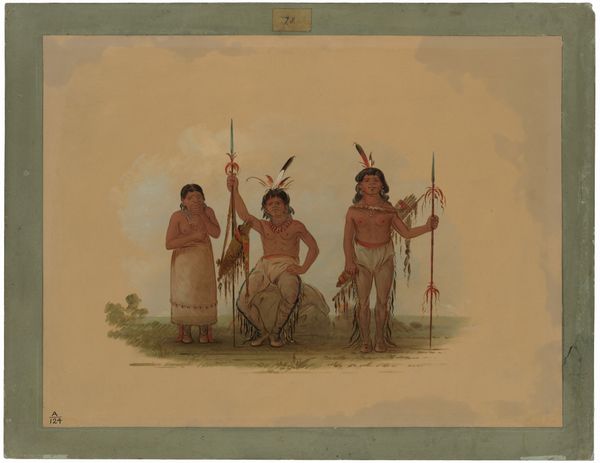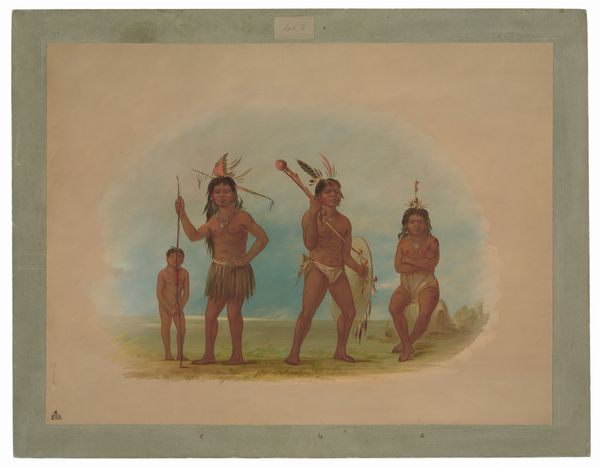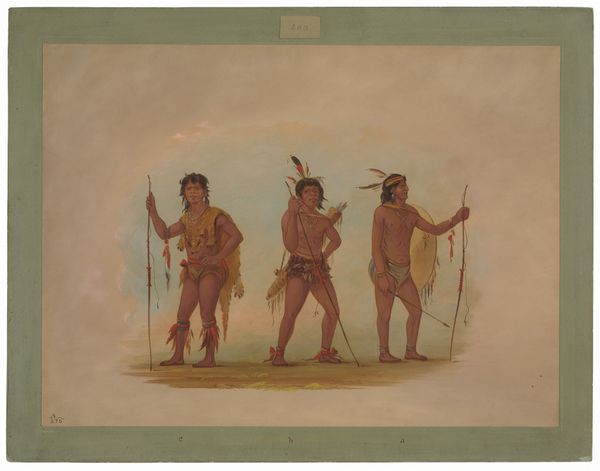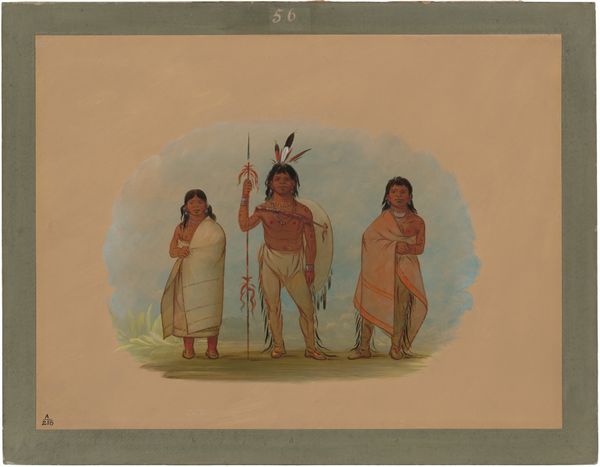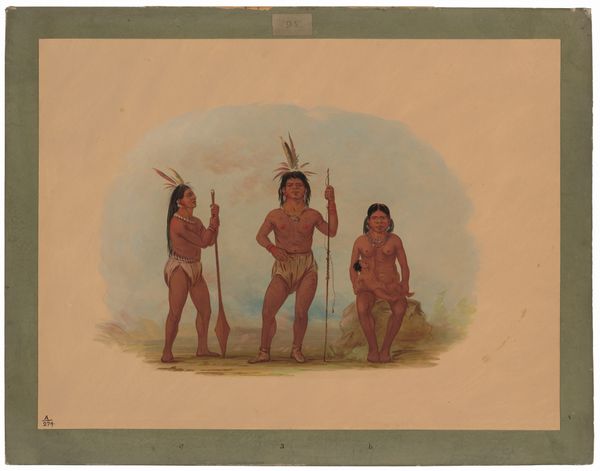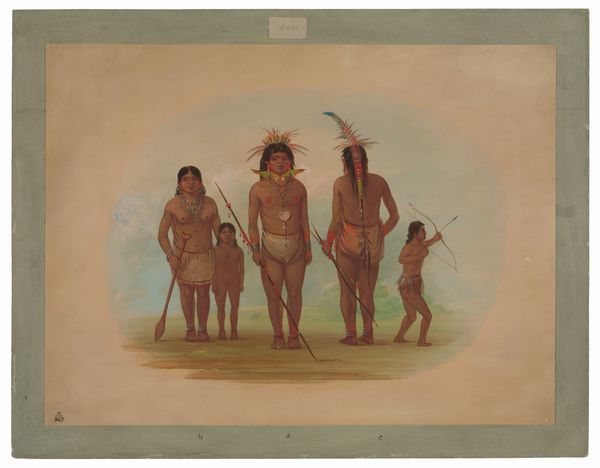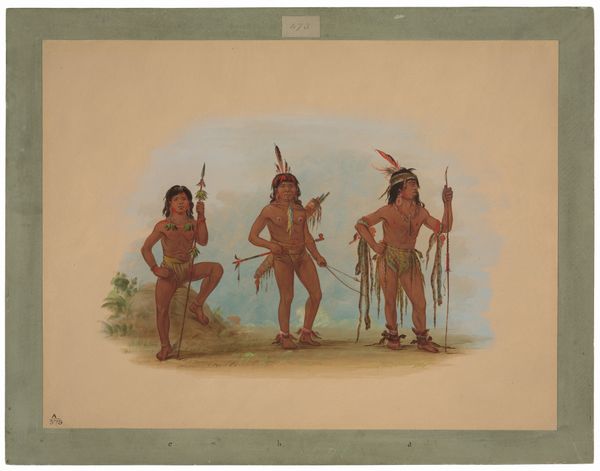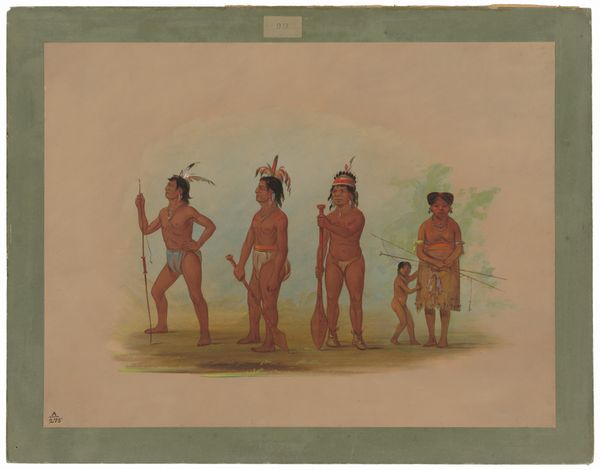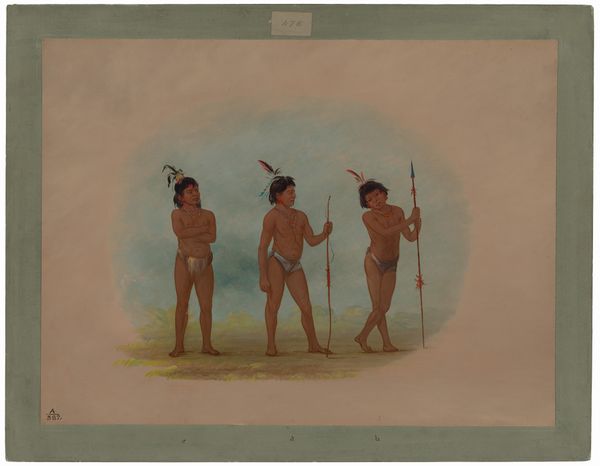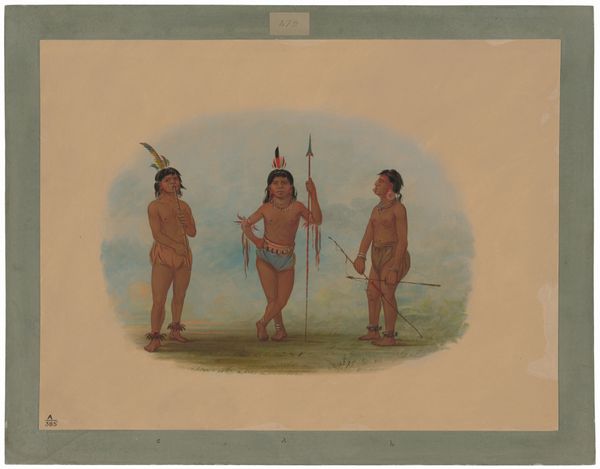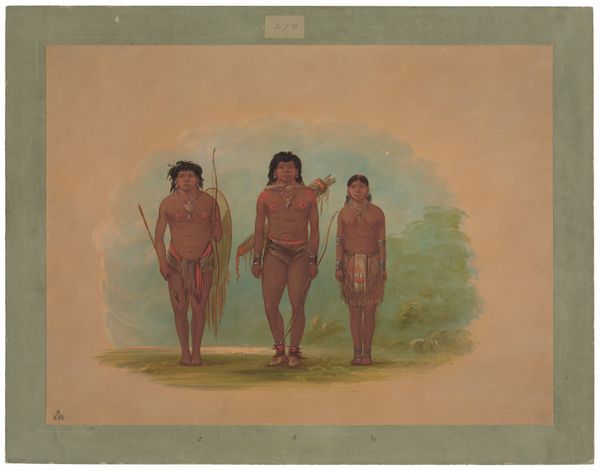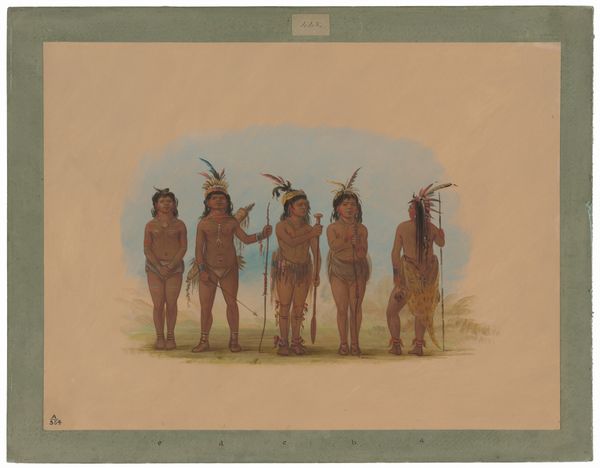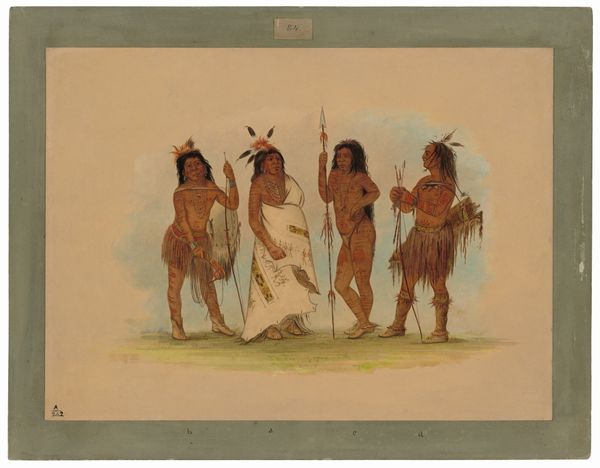
painting, gouache
#
portrait
#
water colours
#
painting
#
gouache
#
watercolor
Dimensions: overall: 45.5 x 62.2 cm (17 15/16 x 24 1/2 in.)
Copyright: National Gallery of Art: CC0 1.0
Curator: Welcome. Today, we're examining "Four Goo-a-give Indians," a watercolor attributed to George Catlin, likely painted between 1854 and 1869. Editor: Right away, there’s this almost dreamlike quality… a peaceful, wistful vibe. Like a faded memory, or maybe something half-imagined. Curator: Indeed. The composition relies on a fairly strict frontal arrangement of the figures. Note the artist's use of watercolor—the light washes create subtle modulations in skin tone, which are vital to our reading of the work's cultural register. Editor: I get that, the washes definitely give it that faraway feel, but it also kind of makes the figures look… I don't know, a little romanticized? Curator: It's crucial to consider Catlin’s project. He was attempting to document Indigenous peoples, and of course, there's an inevitable degree of subjectivity and cultural bias at play. We have to analyze the structural properties of this work through this understanding. Note that their poses, while seemingly natural, reflect an aesthetic of presentation rather than absolute realism. The symmetry reinforces a sense of idealized representation, a "type," as it were. Editor: Okay, I see the deliberate posing you mean now—it does give them this removed quality, like specimens under glass. Curator: Precisely. Furthermore, the minimal background allows us to focus on the human subjects themselves and it is tempting to analyze Catlin's chromatic choices and their impact to our view. What is your interpretation of his chosen colors? Editor: I hadn't focused in that deep, but yes, the pastels almost neutralize the individuals, turning them more into studies or tokens from their fading community. It is like, Catlin both presents them and simultaneously turns them into cultural artifacts. Sad. Curator: A keen observation. Analyzing how Catlin manages pictorial space provides further insight on how we think about this and his other work as he seeks to preserve moments in time. Editor: Absolutely. Seeing the historical context reframes how one initially feels—it gets under the prettiness and exposes a complex act of recording and, inadvertently, possessing. Curator: Ultimately, works such as this challenge our interpretation frameworks and we must be open to engaging and expanding them. Editor: Agreed. Looking closely shifts the emotional center – a crucial reminder of art’s capacity to reflect perspectives, both intended and inadvertently revealed.
Comments
No comments
Be the first to comment and join the conversation on the ultimate creative platform.
